Download white papers created by the Society for Clinical Research Sites (SCRS), which share valuable insights into critical topics for research site sustainability and stronger industry partnerships. These industry-leading white papers provide timely information that can inform and empower decision-making for more collaborative and efficient clinical research.

2024 Site Landscape Survey White Paper
This report compiles key insights from 2024 SCRS Landscape Surveys, covering critical themes like technology integration, site financial health, inclusive recruitment, and record retention. The analysis also covers site financial sustainability, workforce trends, and industry collaboration—shedding light on evolving priorities and challenges of today's clinical research site.
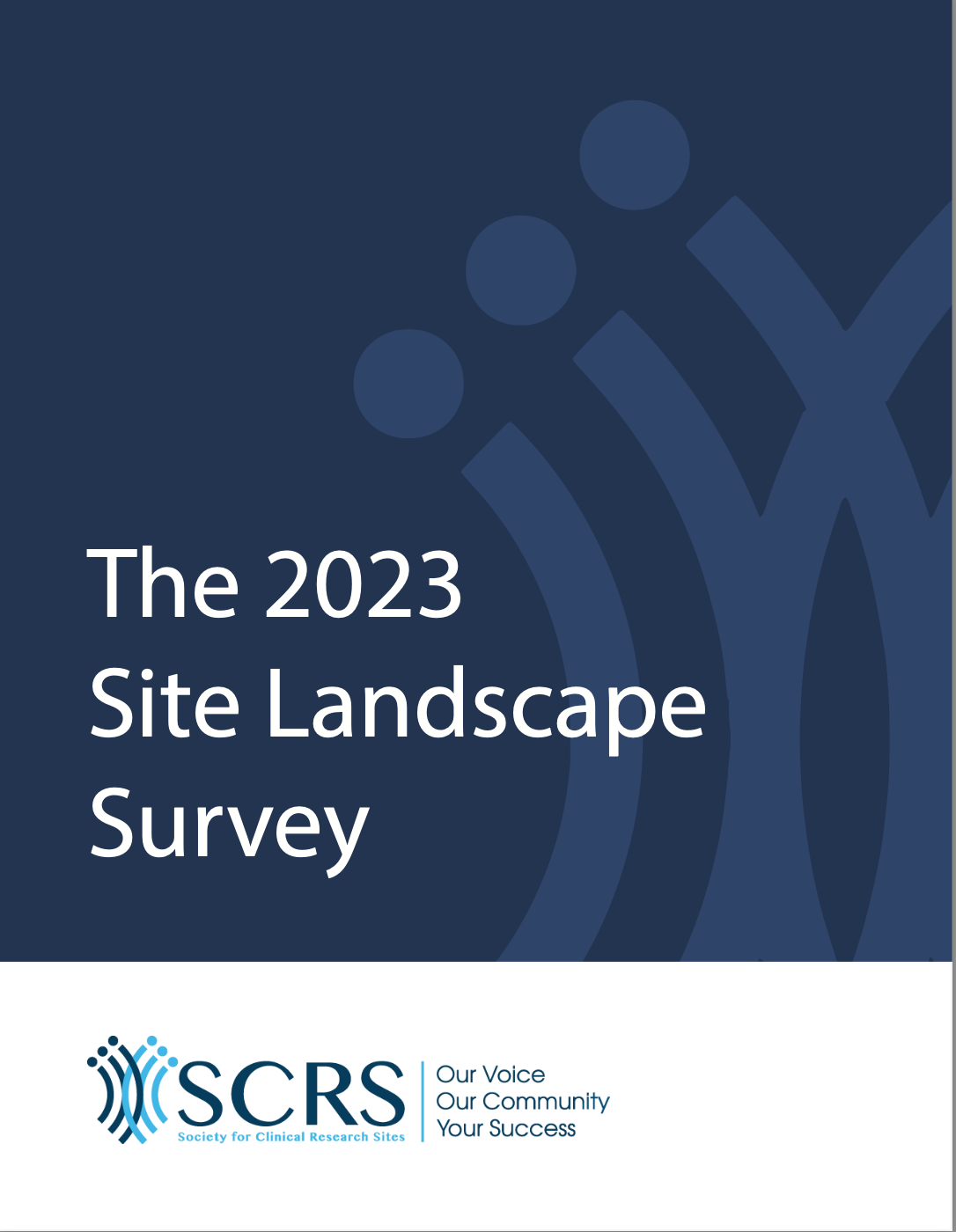
2023 Site Landscape Survey White Paper
The SCRS Site Landscape Survey shows a comprehensive look at what’s impacting site success from year to year and the impact on the broader life sciences industry. Reflecting the current pulse of the industry, this year’s survey shares insights related to clinical technology and innovation, participant diversity and inclusion, site financial health, and record retention. This report serves as a tool for sites and industry organizations to optimize their approaches to trial design and implementation for more productive, effective, and efficient studies.
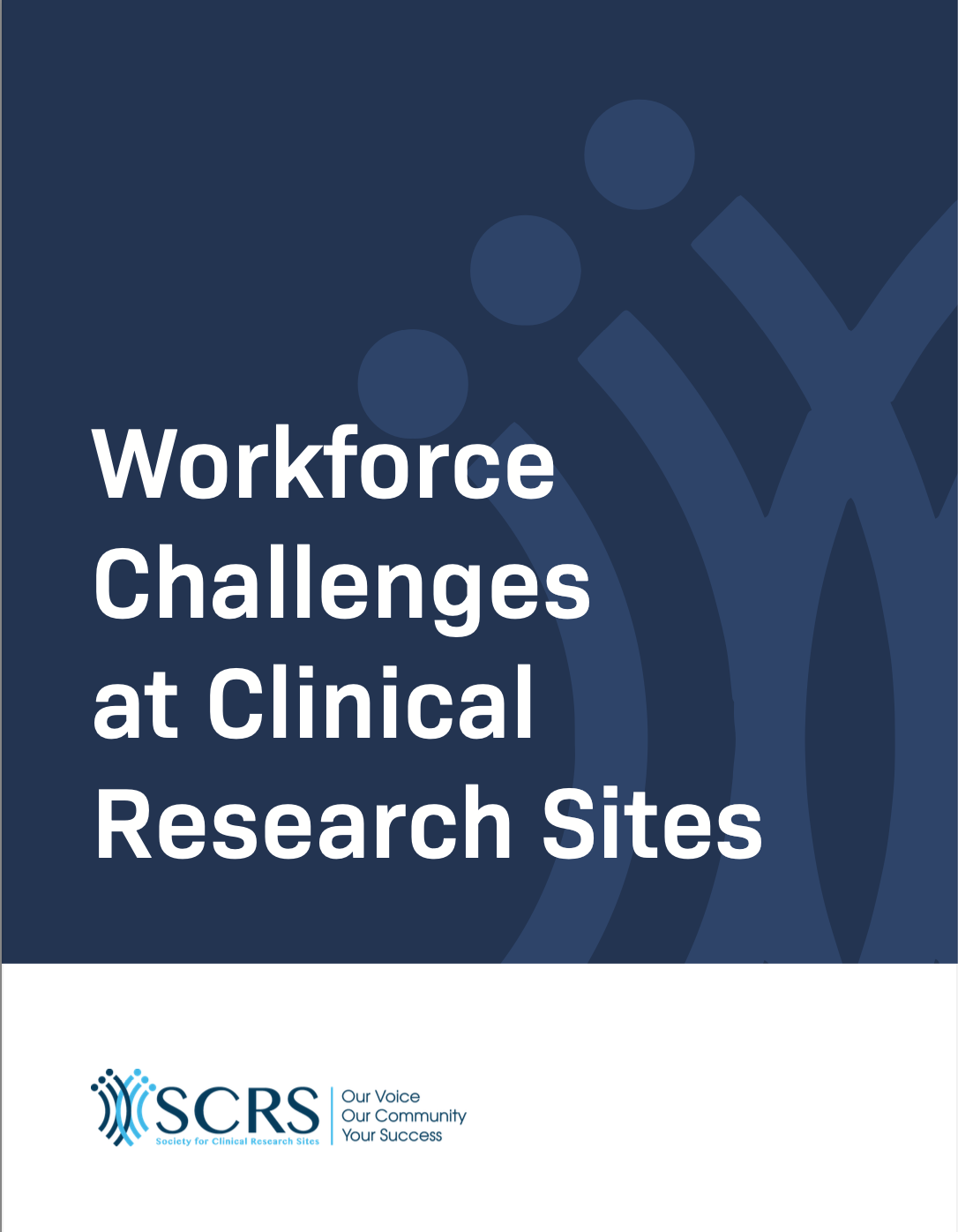
Workforce Challenges at Clinical Research Sites
Since the COVID-19 pandemic began, changing macro- and micro-economic factors have impacted all industries, and clinical research is no different. With unprecedented workforce challenges and increasing costs, clinical research sites are struggling to recruit and retain qualified staff. SCRS conducted a global survey to explore the current workforce challenges at clinical research sites and understand the impact they are having on the clinical research industry.
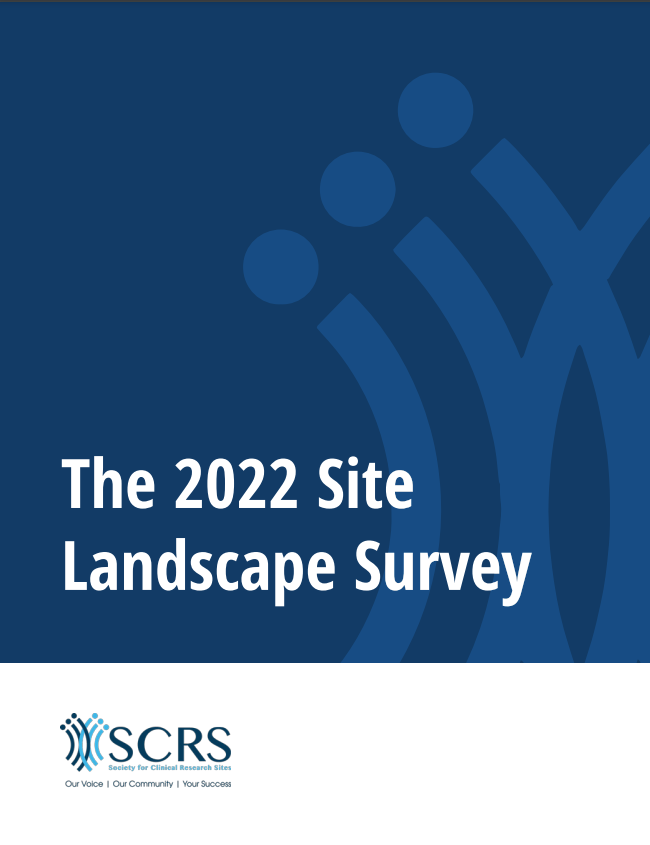
2022 Site Landscape Survey
For the 10th consecutive year, SCRS conducted an annual survey to gather data about the current state of operational health at clinical research sites. The survey responses help us understand factors that are impacting sites’ success and longevity, and provide helpful insights for the life sciences industry to optimize clinical research productivity. The results offer useful insights into the evolution of clinical research from the perspective of sites, as well as a better understanding of factors that impact their operations and sustainability. This. year's survey includes data on site finances, workforce considerations, and larger trends such as decentralization and digitalization.
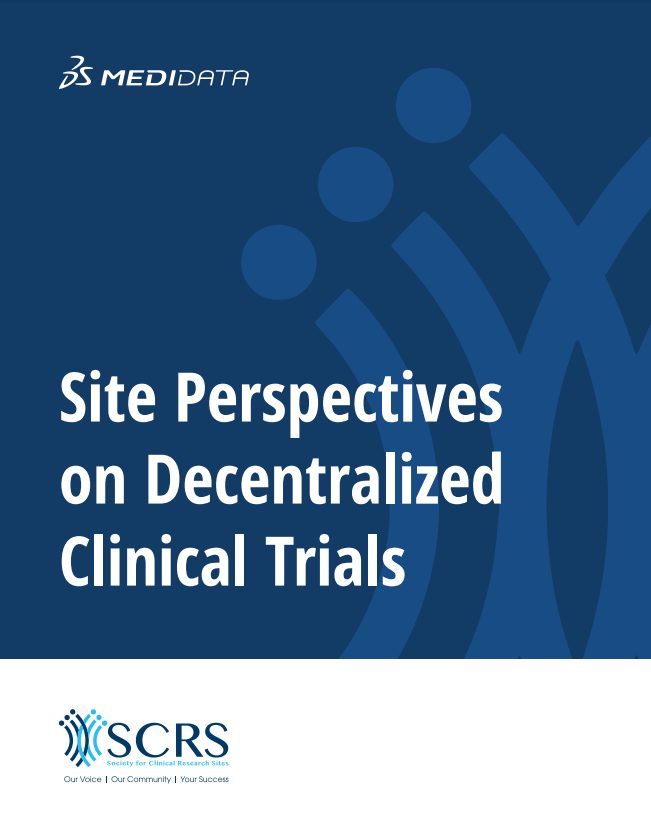
Site Perspectives on Decentralized Clinical Trials
While decentralized clinical trial (DCT) technologies have enabled patients and sites to participate in novel and innovative ways, there is a lack of qualitative and quantitative data from sites on their use and implementation. Medidata collaborated with SCRS to survey sites on DCT topics, aiming to gauge the impact on sites for aspects such as scope, effectiveness, and enablement. Insights into sites' experiences with DCTs will aid stakeholders in refining trial design, operations, and regulatory policies for enhanced patient and site service and global health outcomes.
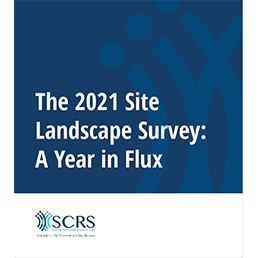
2021 Site Landscape Survey
In the 2021 Site Landscape Survey, nearly 600 respondents from various roles and organizations shared insights on their operations, partnerships, finances, and experiences with technology. The results, while reflecting patterns from previous surveys, also highlight the impact of the ongoing global pandemic and newer trends in clinical research. The data underscores the effects of digitalization and globalization on clinical research sites, revealing varied outcomes such as increased revenue or declined study opportunities. Ongoing trends, like the adoption of eClinical technologies, continue to influence operational strategies. The survey offers actionable insights to enhance relationships and optimize operational health, contributing to improved collective success in clinical development.
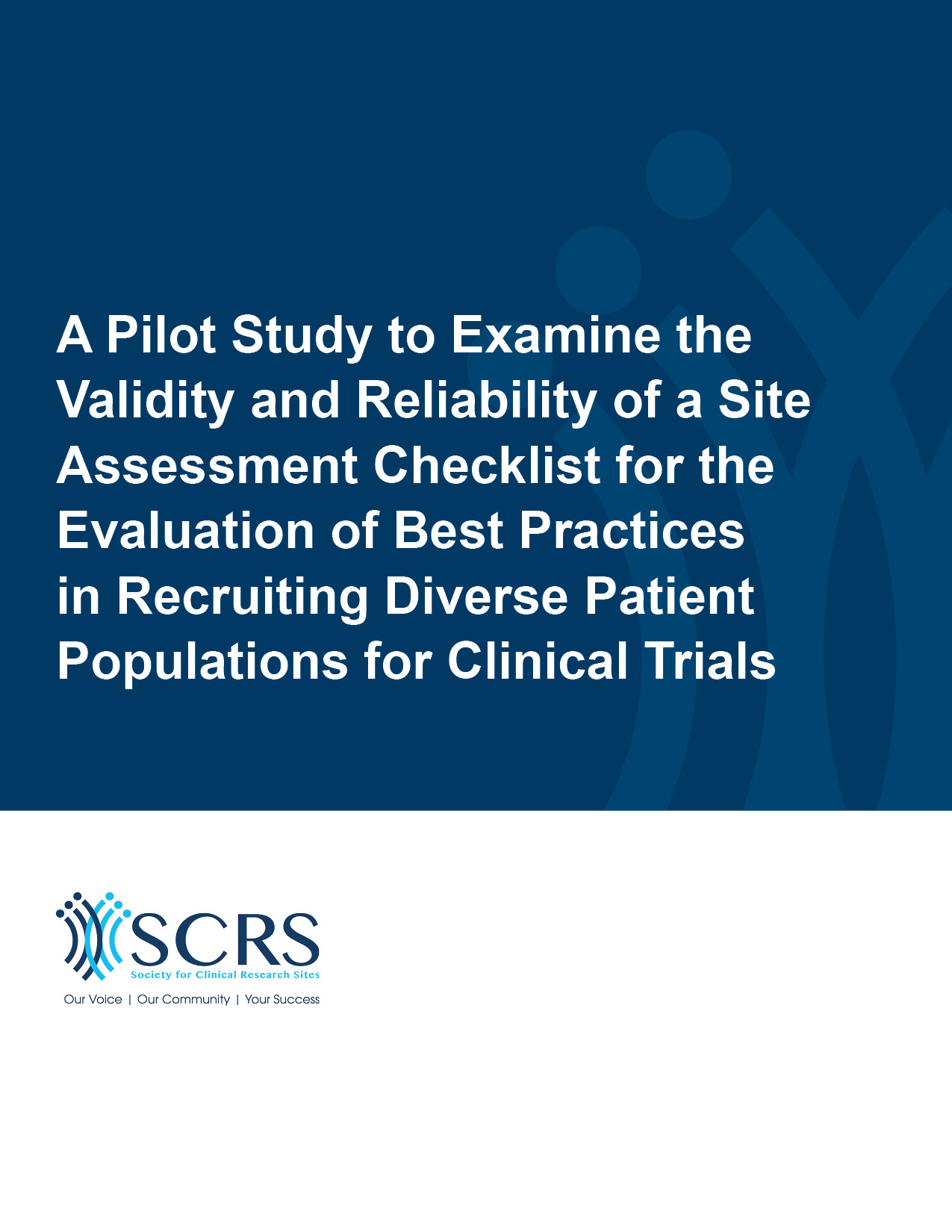
A Pilot Study to Examine the Validity and Reliability of a Site Assessment Checklist for the Evaluation of Best Practices in Recruiting Diverse Patient Populations for Clinical Trials
Recognizing the crucial role of diverse patient populations in clinical trials, stakeholders in pharmaceutical development emphasize the need for inclusive recruitment. From this need, SCRS established a program to increase education on inclusive recruitment opportunities. The initiative also developed a 27-item checklist evaluating sites' knowledge for recruiting diverse patients for clinical trials. The checklist serves as a self-assessment tool for sites, aiding them in developing improvement action plans. This paper discusses the development and psychometric testing of the diversity assessment tool, highlighting efforts to enhance best practices in recruiting diverse patient populations for clinical trials.
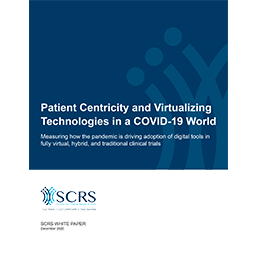
Patient Centricity and Virtualizing Technologies in a COVID-19 World
How sites view the digital tools that encourage patient centricity is critically important to clinical trial stakeholders during the COVID-19 era, as decentralized trials are destined to play a larger role. To gauge sites’ level of acceptance and knowledge about virtualizing technologies, SCRS. collaborated with Medidata to conduct an online survey. It took place between May 19 and July 10, 2020, a meaningful timeframe as the pandemic was well underway, allowing sites to respond to questions through a “COVID lens”. The survey measured current and anticipated levels of adoption of patient-centric tools, along with the sites’ perspective on patient reactions.
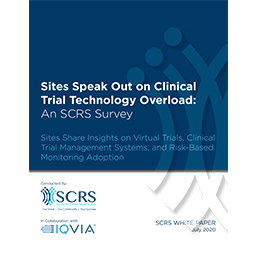
Sites Speak Out on Clinical Trial Technology Overload
SCRS collaborated with IQVIA to conduct a global site-based survey focused on the expanding volume of clinical trial technologies. The survey aimed to pinpoint the burdens sites face in adopting an array of new systems, each with its own passwords and required training. The survey was conducted on the cusp of the COVID-19 pandemic, and with sponsors embracing virtual clinical trials, sites and patients will be able to remain safer by decreasing the number of visits, replacing site visits with virtual visits, and increasing remote monitoring.
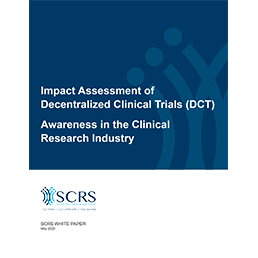
Impact Assessment of Decentralized Clinical Trials (DCT) Awareness in the Clinical Research Industry
Decentralized Clinical Trials (DCTs) have the potential to provide tremendous efficiencies to the clinical trial process. However, understanding the great impact they are having on sites and the trial industry is critical to taking the appropriate steps towards implementation. In collaboration with VirTrial, SCRS embarked on a survey and publication initiative to provide this important analysis. Primary concerns and the current state of needs at the site level are centered around assuring patient safety and adequate education and understanding. This white paper expands on the value of DCTs and what needs to be done in order to prepare for them.
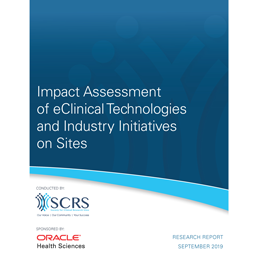
Impact Assessment of eClinical Technologies and Industry Initiatives on Sites
Sponsors and CROs fight a continuous uphill battle to reduce complexity, streamline business processes and workflows, ensure compliance and increase efficiencies in the pursuit of bringing drugs to market. Fundamental to this goal is a site-centric approach to conducting clinical trials. Sites are dynamic environments, and new technology and industry initiatives are important complements to the critical need for relationship-building and maintenance. But, are these technologies and initiatives helping improve site and sponsor-CRO collaboration and creating a competitive edge through improved clinical trial performance? To explore these issues and their impact, SCRS and Oracle Health Sciences surveyed clinical research site professionals around the world.
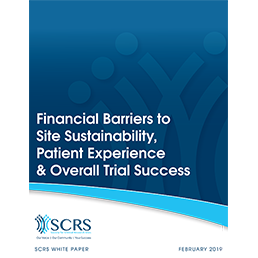
Financial Barriers to Site Sustainability, Patient Experience and Overall Trial Success
It is well-known and frequently documented that financial stress is one of the primary issues negatively impacting clinical research site success. Previous data collected by SCRS, in partnership with Greenphire, identified four major challenges affecting clinical trial success: limited operating cash, manual invoicing processes, untimely payment frequency and lack of financial transparency are all top of mind for sites globally. However, it is important to understand that the barriers to success are not exclusively correlated to site payments. In fact, the challenges are evident throughout the life-cycle of a clinical study, as early as the study budget negotiation processes and all the way through patient engagement and payments.
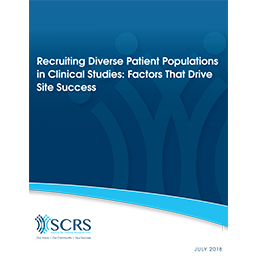
Recruiting Diverse Patient Populations in Clinical Studies: Factors That Drive Site Success
As part of its Diversity Awareness Program, SCRS conducted a pilot study and survey to determine how successfully sites recruit diverse patient populations for clinical studies and to examine the factors that drive site success or lack thereof. This is the first known comprehensive study of the extent to which sites report being successful in recruiting diverse patient populations in their clinical studies and the factors related to this success. This data may help pave the way for the development of strategies sites can use to enhance their ability to recruit diverse patient populations in clinical studies.
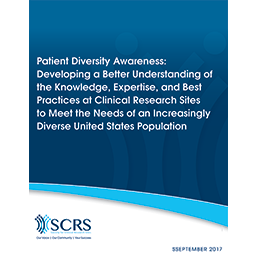
Patient Diversity Awareness: Developing a Better Understanding of the Knowledge, Expertise, and Best Practices at Clinical Research Sites to Meet the Needs of an Increasingly Diverse United States Population
The FDA has imposed, and continually is tightening the reigns on ensuring that clinical trials enroll racially/ethnically diverse patients. This warrants bolstered safety and efficacy for the representative patient population that will be using new medical products. Sponsors are highly encouraged to obtain a diversified patient population on all trials, not just for particular therapeutic indications. In this pilot study, site interviews were implemented to identify factors that affect the enrollment of diverse patient populations in clinical research trials. Future efforts to increase site awareness and best practices for inclusion of diverse patient populations in clinical research must therefore target issues that matter most to sites and patients to benefit society overall resulting in increased patient diversity within clinical trials.
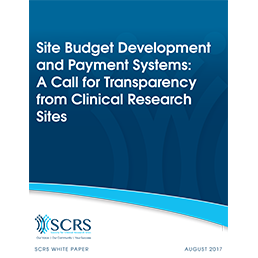
Site Budget Development and Payment Systems: A Call for Transparency from Clinical Research Sites
SCRS research outlines the role technology innovations have on the power to bring transparency and efficiency to the site payment and budget process, however, legacy processes and practices fail to embrace these solutions. This white paper explores potential solutions and reports on site responses identifying features they would find to be the most valuable, providing a potential road map for industry partners to use in addressing these concerns.
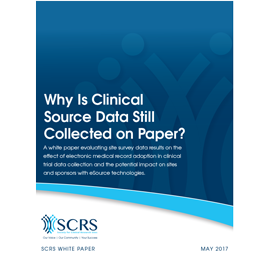
Why Is Clinical Source Data Still Collected on Paper?
This white paper builds on data from the Research Site Source Survey, reporting that paper source document creation is a task completed at many sites at significant expense and risk to quality. This task continues despite widespread adoption of electronic medical records and the development of a regulatory framework for eSource. In this paper, the task of paper source document creation and transcription is explored and the total cost calculated.
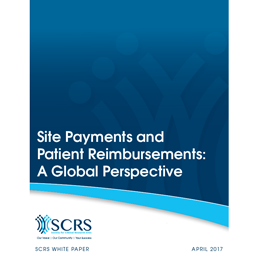
Site Payments and Patient Reimbursements: A Global Perspective
This white paper presents global data on site perspectives on payments and patient reimbursement. The white paper validates SCRS advocacy for key improvement from payers. It also demonstrates a complex relationship between payment processes to sites and patient payments, linking these key improvements to the patient experience.
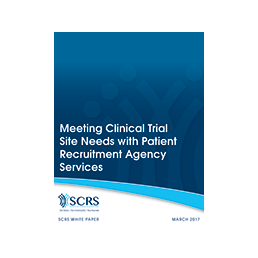
Meeting Clinical Trial Site Needs with Patient Recruitment Agency Services White Paper
Innovation in how patients and clinical trials are brought together is urgently needed. Recruitment that takes longer than expected increases the costs of products and prevents new products from being brought to market. Too many studies are canceled because recruitment is never completed. This white paper presents information collected from clinical research sites in the US and five European countries and provides new insights into factors holding back patient recruitment innovation and how they can be overcome.
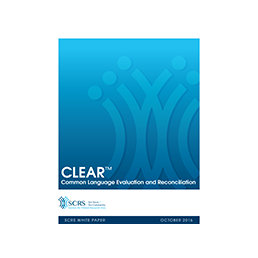
CLEAR (Common Language Evaluation and Reconciliation) White Paper
The purpose of Common Language Evaluation and Reconciliation (CLEAR) is to streamline contract negotiations and thereby accelerate site initiations, leading to increased recruitment timeliness and reduced study start-up costs. Improving productivity by reducing cycle times and accelerating clinical research will allow industry to get new treatments in development to patients faster without sacrificing quality. This initiative benefits all the stakeholders within industry — sponsors, CROs, and sites — but most importantly patients.
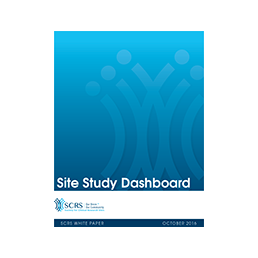
Site Study Dashboard White Paper
What if sponsors had a standardized process for sharing information about sites in the form of a Site Study Dashboard? Sponsors have this information readily available. Sites want a dashboard that reflects their performance. This paper lays out nine key metrics that can be shared with sites and the methodology of how the data can be shared to enhance the relationship with the site. It also provides insight into the format of data that sites are most likely to find meaningful.

Site Payment White Paper
This paper documents five burdens the current site payment structure places on sites and solutions to address these issues. Additionally, the paper outlines further burdens that will be examined over 2016-2017 by the SCRS payment initiative working group.

The Approach of Protocol Training on Clinical Trial Quality White Paper
In an era of increasing protocol complexity, growing Investigator complaints and inspections, higher Investigator turnover and the focus on quality by design, it is becoming more important than ever to ensure investigative sites are adequately trained to deliver high-quality data. The growing number of FDA findings related to failure to follow the investigational plan should be a call to action for sponsors, CROs and investigative sites alike to pursue a quest for “zero defects.” Whether this trend is related to increased protocol complexity, the higher number of less experienced Investigators participating in clinical trials, the protocol training approach or some other combination of factors, it demands action.
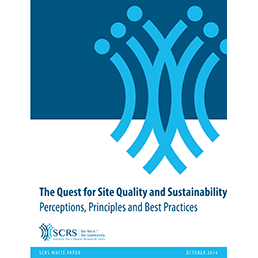
The Quest for Site Quality and Sustainability White Paper
There are a plethora of industry initiatives focused on enhancing the quality of clinical trials. And much of the focus is on defining site quality and performance metrics from the industry perspective. In this quest for site quality and sustainability, SCRS recognized that a key perspective was missing: that of investigative sites. How do the sites view their current levels of quality? How do they feel they can and should be measured? What do they need to do internally to improve their performance and what do they need from their sponsor and CRO partners to enhance their quality as well as sustainability?
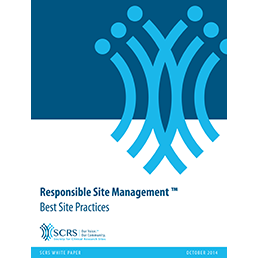
Responsible Site Management White Paper
These Best Site Practices are meant to provide clarity and guidance to sites to promote the achievement of a compliant, efficient and sustainable research site, and to be recognized as a site of commitment and quality by the research enterprise. It covers qualifications for Principal Investigators and site staff, how to gauge site performance and set up site infrastructure, remaining compliant with regulatory agencies, and more.
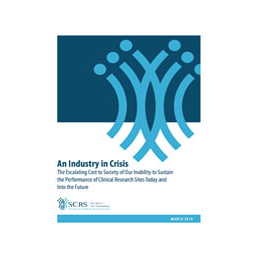
An Industry in Crisis White Paper
This paper examines the acute challenges faced by investigators and clinical research sites within the life sciences enterprise. As the sustainability of many sites has become increasingly tenuous, established sites and investigators struggle to remain viable. Others enter the industry with little chance to succeed, often quickly departing after conducting only one study, or no studies at all. There are enormous societal costs associated with this crisis, including financial costs to industry – and most importantly – the human cost of productive lives lost. SCRS shares emerging solutions that will better integrate clinical sites and investigators as full and sustainable partners within the clinical research ecosystem.
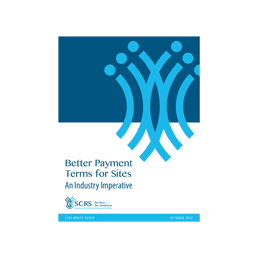
Better Payment Terms for Sites White Paper
A new medical therapy has just been approved and the sponsor touts this major achievement by publicizing the clinical trial results and the number of subjects who participated in the pivotal studies. Whether that number is 300 or 3,000, those subjects had to be recruited, enrolled, randomized, and engaged in a series of protocol-related visits to investigative sites, the very backbone of the clinical trials industry. Without sites, it would be virtually impossible to conduct clinical research. And whether those sites are free standing, linked to a medical practice or part of an academic medical center, they are a precious resource. Yet many are struggling, not only with ever more complex protocols, but also with the financial realities of operating a clinical research site.
